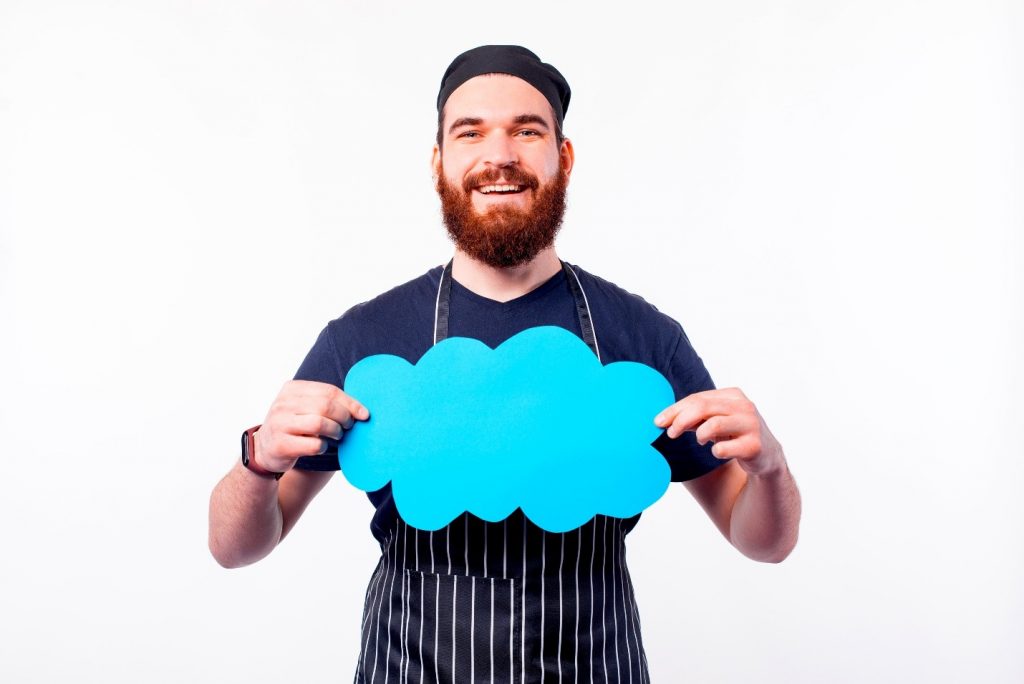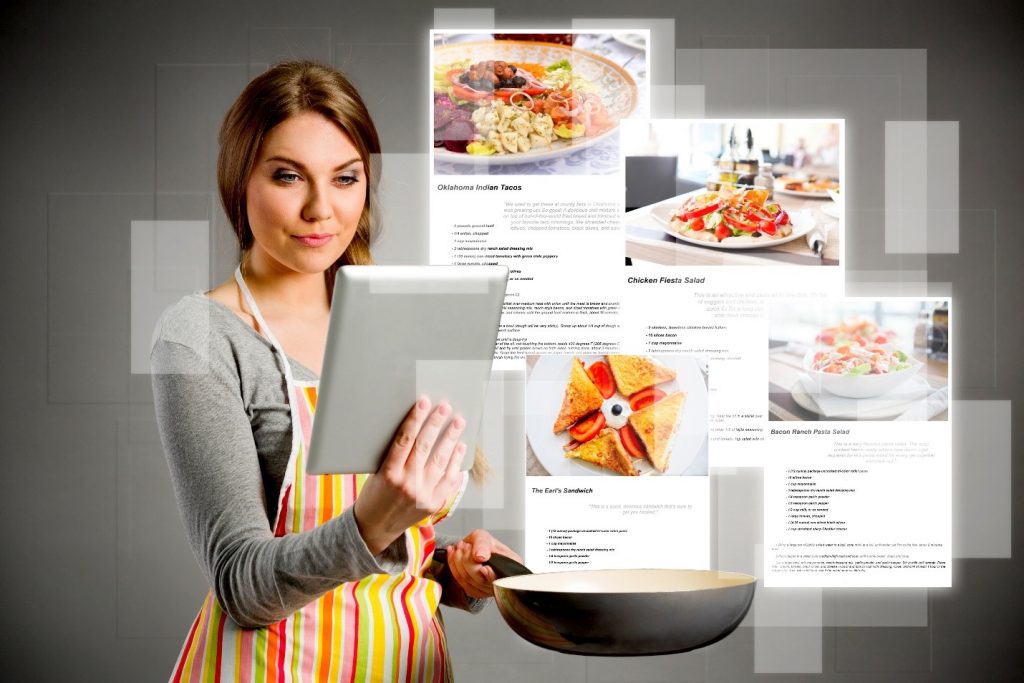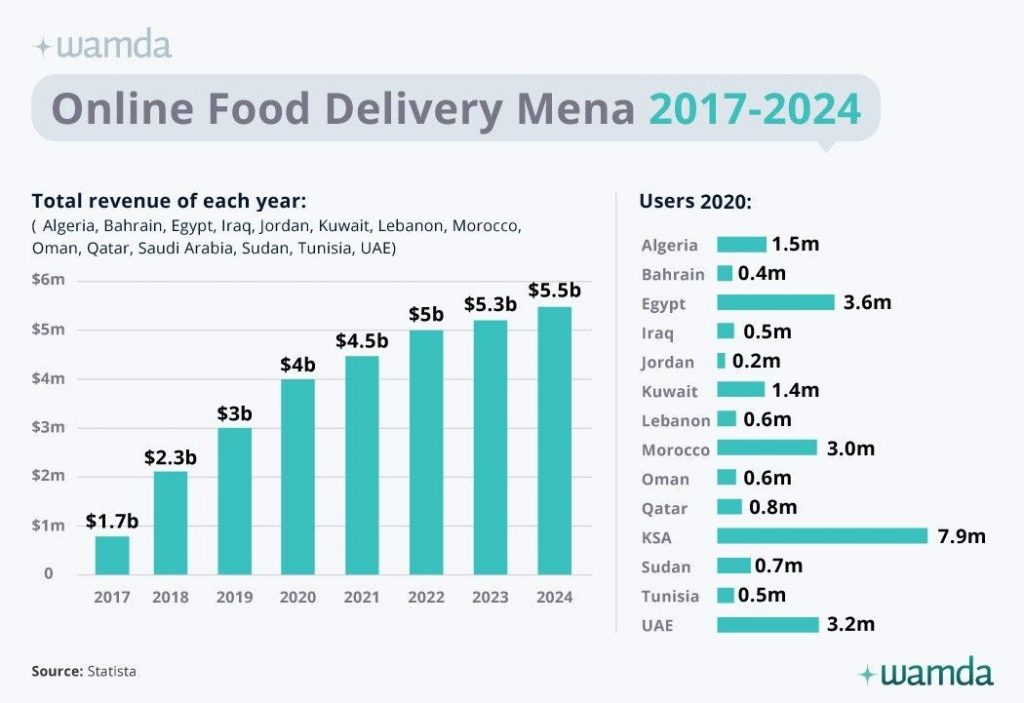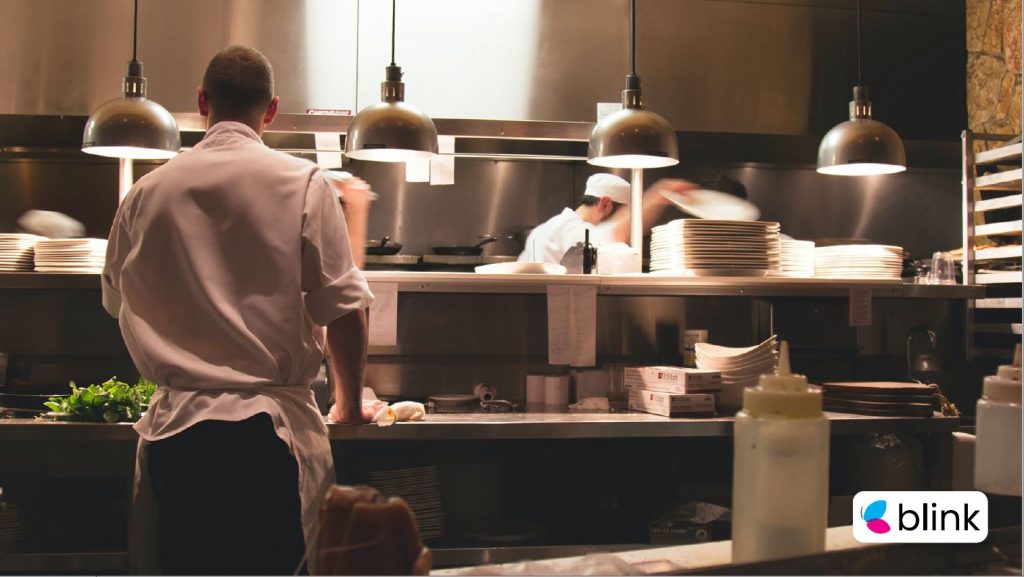Whether we wanted it or not, the recent pandemic situation spanning over the last few years or so has given rise to a lot of business opportunities.
While many thriving businesses in the food industry took a nose dive into dirt, a lot of startups and name-brand restaurants managed to take the hit.
To this effect, we would also like to mention that the majority of food businesses that failed to sustain their operations during the COVID-19 frenzy are alluded to the operators’ inefficiency to adopt new changes.
A recent example of such businesses headed towards an early and unexpected closure would be the lack of an online food ordering app integration, refusal to take food orders coming in from remote customers, substandard delivery policies, and vice versa.
This leaves us with only a specific percentage of food industry businesses that not only thrived during COVID-19, but despite taking a hit, or laying off their employees, the company operations expanded by tenfold.

The interesting news is that eMarketer experts reported steady growth in the food business industry starting from 2019 and going all the way to the year 2020. Likewise, in the year 2019, according to eMarketer experts, the number of online food order app users was 36.4 million.
As we move on to 2020, the same number of users grew to be at a whopping 45.6 million.
Meanwhile, revenue for such food businesses, regardless of whether they were startup or old-school restaurant operators, continued to grow by 26%.
What’s the point that we’re trying to make here?

If you’re looking to make a safe bet and invest in a sound business, go for something along the lines of cloud kitchens.
Cloud kitchens are not only today’s growing fad; they’re safe, economical, and promise a huge ROI factor to investors from different aspects.
In this post, we’ll talk about the rise of cloud kitchens, some interesting stats, and how to invest in cloud kitchens from a safe point of view.
So, let’s get to it.
What Are Cloud Kitchens?
People also call them ghost kitchens and virtual kitchens, but we’ll stick with the ‘cloud kitchen analogy’ for the sake of helping you to understand the concept.
Cloud kitchens are shared commercial spaces where either one restaurant prepares food or works in coherence with other restaurants. The main thing is that these restaurants follow an online food delivery format through some kind of food aggregator merchant app.
Each restaurant may, or may not have an online partnership with the food services merchant. If it does have a contract, then the said restaurant is maintaining a name-brand identity on popular online food ordering platforms.
These cloud kitchens are utilitarian, which means that there is no dine-in facility in these cloud kitchens. Staff-wise, we are looking at only a handful of manpower consisting of a manager, a supervisor, chefs, and people with key roles adjacent to fulfilling the operations easily.
So, the next time you hear the term “What are cloud kitchens”, you can think of warehouse space with kitchen equipment, pre areas, lots of yelling chefs, and the whole shebang!
Also Read: Cloud Kitchens | Will This Concept Catch Up In 2021?
What Is Cloud Kitchen Concept?
The concept of cloud kitchens, also known as virtual kitchens or ghost kitchens, is a relatively new and rapidly growing trend in the food industry. Essentially, cloud kitchens are professional kitchen facilities that rent out space to food businesses without the need for a physical restaurant space. Instead, these businesses operate solely through online ordering and delivery services.
The rise of cloud kitchens can be attributed to a number of factors. For one, the demand for food delivery services has skyrocketed in recent years, driven in large part by the convenience and ease of online ordering. Additionally, the high costs associated with opening and maintaining a traditional brick-and-mortar restaurant have made it increasingly difficult for smaller food businesses to compete.
With cloud kitchens, however, entrepreneurs can focus solely on food preparation and delivery, without the overhead costs of a physical location. This allows for greater flexibility, scalability, and profitability.
Cloud kitchens also offer a number of benefits for consumers. For one, they provide a wider variety of food options, as businesses are able to experiment with new menus and concepts without the risk of investing in a physical location. Additionally, cloud kitchens often operate in areas with high demand but limited dining options, making it easier for consumers to access quality food.
Overall, the concept of cloud kitchens is revolutionizing the food industry, offering a new and innovative way for businesses to operate and for consumers to enjoy delicious and convenient meals.
Are There Any Different Types of Cloud Kitchens?

As a matter of fact, yes, there are different types of cloud kitchens working in different shapes and forms. Let’s take a look at some of them right now:
1. Standalone Cloud Kitchen:
This type of cloud kitchen resonates with a small-scale food business operation where a single or multiple brands work under the same facility.
For most of the food industry startups that do not wish to spend too much on infrastructure costs, standalone cloud kitchens are the best choice. They start with a single location but may expand as businesses grow with the passage of time.
Initially, before 2013, standalone cloud kitchens were operated by single name-brand businesses. By 2013, experts suggest that the standalone cloud kitchens model evolved to encourage multiple brands under the same roof.
2. Chain Based Cloud Kitchen Model:
Otherwise known as cloud kitchen chains, they are best suited to meet multiple food businesses’ requirements. From an investment point of view, several parties may shake hands on opening cloud kitchens in chains, while each brand catering to different food brands at the same time.
Think big; think multi-location, multi-city operations.

Cost Of Starting A Cloud Kitchen
The cost of starting a cloud kitchen can vary depending on various factors. Here are some key points to consider:
-
Location
The cost of rent and utilities can vary depending on the location of the cloud kitchen. A prime location in a high-traffic area may cost more than a less desirable location.
-
Equipment
The cost of equipment such as ovens, refrigerators, and other appliances can add up quickly. It’s important to invest in high-quality equipment to ensure efficiency and longevity.
-
Licenses and permits
Depending on the location and type of food being prepared, there may be various licenses and permits required. These can include health permits, business licenses, and food safety certifications.
-
Staffing
The cost of hiring and training staff can be a significant expense. It’s important to ensure that there are enough employees to efficiently prepare and deliver orders.
-
Marketing and advertising
In order to attract customers, marketing and advertising efforts may be necessary. This can include social media advertising, email marketing, and other promotional tactics.
Overall, the cost of starting a cloud kitchen can range from thousands to hundreds of thousands of dollars. It’s important to carefully consider all expenses and create a comprehensive budget to ensure the success of the business.
If you’re interested in starting a cloud kitchen, there are a few important steps to follow. First, you’ll need to research the market and determine what type of food you want to offer. You’ll also need to develop a business plan and secure funding for your venture.
Once you have a solid plan in place, you’ll need to find a location for your cloud kitchen. This could be a commercial kitchen space, a shared kitchen, or even a food truck. You’ll also need to purchase equipment and supplies, such as cooking utensils, food storage containers, and delivery vehicles.
Next, you’ll need to create a menu and build your online presence. This could involve creating a website, social media accounts, and online ordering systems. You may also want to consider partnering with food delivery services to expand your reach.
When it comes to staffing your cloud kitchen, you’ll need to hire chefs, cooks, and delivery drivers. You may also want to consider outsourcing tasks like marketing and accounting to free up your time to focus on the day-to-day operations of your business.
Finally, it’s important to stay up-to-date on industry trends and regulations. This could involve attending trade shows, networking with other industry professionals, and keeping up with local food safety and licensing requirements.
Starting a cloud kitchen can be a challenging but rewarding venture. By following these steps and staying focused on your goals, you can build a successful business that meets the needs of today’s consumers.
Online Food Business Prospects in MENA/ MENAP Regional Belt
- Shared Cloud Kitchen(s):
If you are a startup food business owner, you may have heard of shared cloud kitchens.
These kitchens are ideally meant for food businesses that are just about getting started. Under such circumstances, multiple food brands may work together, while being able to keep the cost focus on food production, maintenance, and rentals.
Most of the time, startup food brands that work in a shared cloud kitchen, only spend most of their money on creating their own brand and marketing.
-
Cloud Kitchen with a Restaurant Kitchen:

This one’s a combination of a shared space rented out by a restaurant with a physical location.
You may see customers going in for a dine-in experience, but what they don’t know is that other name-brand food businesses may be working in the kitchen to fulfill remote food orders for their respective clients.
The most relevant example of restaurant kitchen + cloud kitchen would be “Hardeep Punjab”. It is a very old Indian restaurant that caters to its fair share of customers via a traditional business model.
However, ‘Hardeep Punjab’ also has ‘Red Bell Pepper’ and ‘Flavors of Punjab’ name restaurants working in the same kitchen. However, the latter two brands cater to their customers through the food aggregator’s online ordering portal.
-
Home-based Cloud Kitchen:
These cloud kitchens are operating from a home.
This type of business model is an ideal choice for family businesses, solopreneurs, and housewives who work in a kitchen in the same house. As usual, the only difference is that each of these operators has its brand name, and they are working through an online food services provider under unique brand names.
The best thing about home-based cloud kitchens is a small menu that promises home-cooked food. These businesses share their expenses and have a very low ‘Opex/Capex’ cost factor to account for.
How Does a Typical Cloud Kitchen Function?

If we were to talk about a traditional hub & spoke business model, cloud kitchens in this configuration, work under the same roof to accept online orders and have them delivered to their respective customers.
A ‘Hub’ is where food is cooked, and a ‘Spoke’ is the main forward base where restaurants send their orders for pickup and further delivery.
How To Invest In Cloud Kitchens?
Cloud kitchens are an appetizing opportunity for investors due to several reasons.
If we were to talk about the investment opportunities that came up during the Pandemic situation, the swelling trend of the food industry attracted a lot of potential investors from all over the world.
These people are smart, and they know how to stack their cards when it comes to making substantial investments in cloud kitchens.

Former Uber CEO: Travis Kalanick
For instance, ‘Travis Kalanick’, the former CEO of Uber invested millions in raising a startup, simply called: ‘CloudKitchens’.
Back in January 2019, Travis was angling for investing in a cloud kitchen business model that would only fulfill ‘For Delivery Online Food Orders’. Did the system work for Travis and his partners? It did! Insiders report that Travis Kalanick invested approx. $130 million into purchasing additional properties in different cities based around the same business model.
Thanks to an “uber” alpha male mentality, ‘CloudKitchens’ fell from grace, despite having a lot of business potential. However, from an investment point of view, it was a good example of calling the shots at the right time, given how healthcare organizations motioned a swift lockdown that ultimately affected many businesses.
-
Start With Low-Cap Initial Investment:
Given your industry’s niche and the nature of business, if you’re looking for a side hustle, or simply trying to figure out how to invest in cloud kitchens, start small.
A low cap investment, especially, if you’re going in solo, aggravates low risk and lesser accountability. Because there might be unforeseen circumstances that could affect the cloud kitchen’s potential to generate ROI, you won’t have to answer your investor partners.
Plus, small investments, even if they are coming in through micro-loans lead to saving time and hassle on your part. Think of parting ways with a substantial amount of money that you can easily function without.
-
Partnering Up with Other Investors in Cloud Kitchens:
On the flip side, if you are looking for big game prospects, feel free to shake hands with like-minded business associates who are willing to pitch in.
The plus side of investing in cloud kitchens through mutual investors is that you will have low-cost risk, in case the business goes south. Since everyone’s involved with their fair share of the money, if your contribution is small, you’d have to lose less. This is a better investment opportunity if you think that you do not have a lot of money, to begin with.
-
Draw Up a Fail-Safe Contract on How to Invest In Cloud Kitchens:
This part is important for people who are looking to invest in cloud kitchens via a mutual investment pool with other parties.
By all means, if it is possible, do not claim responsibility if the cloud kitchen business model doesn’t work out long term. Just to be on the safe side, all investing parties need to be accountable for sharing loss percentages, as much as they are excited to take a fair chunk of profits when the ROI starts rolling in.
Oftentimes, when happens is that naïve investors are made to believe that their investment in cloud kitchens is a safe bet – and that too, without any risks. Since businesses are volatile, and anything can happen out of the blue, such investors end up losing money when things go south.
To make matters worse, if you have taken a loan from someone to invest in cloud kitchens, your contract can save you plenty of headaches because the primary investor will be liable to sustain financial injury. This way, you won’t be legally bothered to pay back the principal amount out of your own small pocket!
Cloud Kitchen Pricing
Cloud kitchen pricing is an important factor to consider when starting a food business. This type of kitchen is a shared commercial space where multiple food businesses can operate. Pricing for these kitchens varies based on location, amenities, and services provided. It’s essential to do research and compare prices before choosing a cloud kitchen.
One way to save money on cloud kitchen pricing is to choose a location that’s outside of a high-demand area. Kitchens located in popular areas may have higher fees due to their prime location. However, it’s important to balance cost with accessibility and convenience for customers.
Another factor to consider is the amenities offered by the cloud kitchen. Some kitchens offer fully-equipped spaces, while others may require you to bring your own equipment. The cost of renting equipment and utilities can add up, so it’s important to factor these expenses into your budget.
Services provided by the cloud kitchen can also impact pricing. Some kitchens offer additional services such as marketing and delivery, which can be beneficial for new businesses. However, these services may come at an additional cost.
In conclusion, when researching cloud kitchen pricing, it’s important to consider location, amenities, and services provided. By comparing prices and weighing the costs and benefits, you can make an informed decision and set your food business up for success.
How To Invest In Ghost Kitchen
Investing in ghost kitchens can be a great opportunity for those looking to enter the food industry without the high costs of traditional brick-and-mortar restaurants. Here are some steps to consider when investing in ghost kitchens:
1. Research the market
Look into the demand for ghost kitchens in your area and identify any gaps in the market that you can fill.
2. Choose the right location
Ghost kitchens should be located in areas with high population density and easy access to delivery services.
3. Invest in quality equipment
Ghost kitchens require high-quality equipment to ensure efficient and safe food preparation.
4. Focus on branding
Develop a strong brand identity for your ghost kitchen, including a unique name, logo, and menu.
5. Partner with delivery services
Form partnerships with popular delivery services like Uber Eats or Grubhub to ensure your food reaches customers easily.
6. Create a streamlined ordering system
Invest in a user-friendly online ordering system that makes it easy for customers to place orders and track their delivery.
7. Develop a marketing strategy
Use social media and other digital marketing tactics to promote your ghost kitchen and attract new customers.
8. Consider franchising
If your ghost kitchen is successful, consider franchising your concept to open additional locations and expand your brand.
By following these steps and investing in a well-planned and executed ghost kitchen, you can potentially reap the rewards of a profitable and growing industry.
Real Estate Agencies are Hustling through Cloud Kitchen Investments:
The people at the top of the food chain in the real estate industry are well-connected.
They prefer investing in cloud kitchens, over dine-in restaurants because of the overall efficiency, low-cost factor, and other variables associated with the platform itself. Therefore, if you are part of the real-estate niche, it’s the right time for you to ring a few former associates, or go in solo.
If you have your own piece of land, you can rent it out to other businesses that are looking to start as cloud kitchens. This is a fantastic opportunity because McDonald’s actually did that when the business was just about getting started.
Also Read: McDonald’s Is a Real Estate Empire [It’s Not a Fast Food Chain]
Since the COVID-19 outbreak, a lot of chaos has subsided, with people getting vaccinated and businesses returning to the “old” normal.
Therefore, many barriers have come crashing down. Already, millions of people are ordering food by dozes through online food apps. It’s the perfect opportunity for you to get started on how to invest in cloud kitchens right away.
If you have any questions, feel free to post them in the comments section below. We would love to hear about your thoughts on the cloud kitchen investment model, and whether it’s a good move for investors or not.
Frequently Asked Questions:
-
Is Cloud Kitchen Profitable?
When considering starting a cloud kitchen, many entrepreneurs often ask the question, “Is cloud kitchen profitable?” The answer is not a simple yes or no, as there are several factors that can impact the profitability of a cloud kitchen.
First and foremost, the location of the cloud kitchen plays a significant role in its profitability. A cloud kitchen situated in a high-traffic area with a significant demand for food delivery services is more likely to be profitable than one in a low-traffic location.
The menu and pricing strategy of the cloud kitchen also have a significant impact on its profitability. Offering a unique and diverse menu at competitive prices can help attract more customers and generate higher profits. Additionally, offering special deals and promotions can help increase sales and revenue.
Another critical factor that can impact the profitability of a cloud kitchen is the efficiency of its operations. Ensuring that the kitchen is well-equipped and staffed with trained professionals can help reduce operating costs and increase productivity.
Marketing and advertising efforts can also play a role in the profitability of a cloud kitchen. Utilizing social media platforms and other digital marketing strategies can help attract more customers and increase brand visibility.
Overall, while there is no guarantee of profitability in the cloud kitchen business, with the right location, menu, pricing strategy, operations, and marketing efforts, it is possible to run a successful and profitable cloud kitchen.
Related Articles:
 Cloud Kitchens: Will This Concept Catch Up In 2021?
Cloud Kitchens: Will This Concept Catch Up In 2021?
 How BlinkCo Helps Dark Kitchens Improve Their Business Models
How BlinkCo Helps Dark Kitchens Improve Their Business Models
 Blink’s Special: Chefs Talking about Restaurant Industry in 2021 & Beyond
Blink’s Special: Chefs Talking about Restaurant Industry in 2021 & Beyond
 New Technology for Restaurants to Reshape the F&B Industry In the Next Decade
New Technology for Restaurants to Reshape the F&B Industry In the Next Decade
 Restaurant Design Ideas: 8 Things to Consider Before Picking a Formal or Casual Restaurant
Restaurant Design Ideas: 8 Things to Consider Before Picking a Formal or Casual Restaurant
